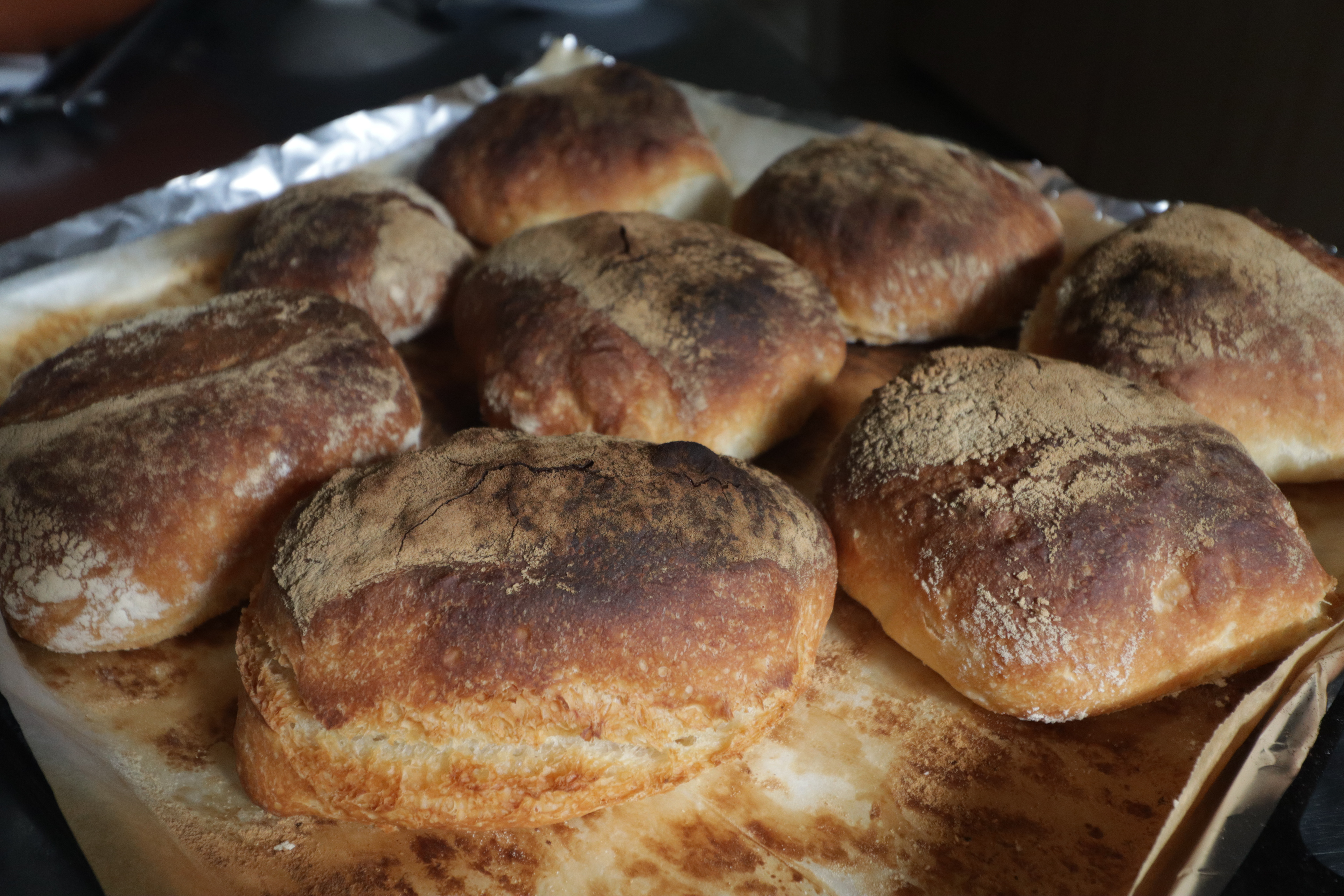The Art of Food Photography: A Closer Look at the Canon RF100 with EF-S 10-18mm Lens
When it comes to food photography, the choice of equipment can make all the difference in capturing the textures, colors, and essence of a dish. The combination of the Canon RF100 camera and the EF-S 10-18mm lens offers a powerful and creative setup for both amateur and professional photographers seeking to elevate their food shots. This pairing might not be the most conventional, especially with a wide-angle lens in the mix, but its unique strengths make it an excellent choice for those looking to capture more than just the food—they capture the story behind it.
The image showcases a batch of freshly baked bread rolls, arranged on a parchment-lined baking tray. Each roll exudes a rustic charm with its uneven, artisan crust, speckled with a light dusting of flour. The golden-brown exterior is punctuated by darker, caramelized spots, evidence of the high heat that created their delightful texture. Some rolls bear small cracks, hinting at the robust, chewy interior hidden within. The parchment paper beneath them is lightly scorched and mottled with oil stains, testifying to the warmth and care that went into the baking process. The overall composition conveys the satisfaction of homemade baking, where imperfection is celebrated as a sign of authenticity and flavor.
The Canon RF100, with its advanced sensor and high-resolution capabilities, delivers stunning image quality that brings out every detail. In food photography, this means you can capture the intricate texture of a bread crust, the delicate sheen of a glaze, or the velvety smoothness of a sauce with striking clarity. The dynamic range ensures that even in high-contrast scenes, such as a brightly lit kitchen or a dimly lit restaurant, every element of your composition is well-exposed. Additionally, the RF100 excels in low-light environments, allowing you to make the most of natural light without resorting to artificial sources that might alter the food’s true appearance.
On the lens side, the EF-S 10-18mm offers creative flexibility. While wide-angle lenses are typically associated with landscapes or architecture, this lens proves its worth in food photography by allowing for dramatic and engaging compositions. Its wide focal length lets you capture an entire table setting or create a sense of depth, pulling the viewer’s eye toward the focal point of your image. This is particularly effective for storytelling, as you can include contextual elements like a rustic wooden table, scattered ingredients, or the subtle gleam of kitchen utensils, all while keeping the food as the centerpiece.
The lens also features image stabilization (IS), an invaluable tool when shooting handheld. This is particularly useful in environments where setting up a tripod isn’t feasible, such as bustling kitchens or impromptu dining setups. The stabilization minimizes motion blur, ensuring your photos remain sharp and professional, even under challenging lighting conditions. Moreover, its short minimum focusing distance allows you to get up close and personal with your subject, making it ideal for detailed close-ups of intricate food textures—be it the flaky layers of a croissant or the delicate bubbles of freshly brewed espresso foam.
What sets this combination apart is its ability to balance technical excellence with creative freedom. The RF100 provides the precision and reliability needed for professional-quality images, while the EF-S 10-18mm lens adds a dynamic, artistic touch. Together, they enable photographers to explore unique angles, frame compositions that tell a story, and highlight the rich textures and colors that make food so visually appealing.
In short, this duo opens up a world of possibilities for food photographers. Whether you’re capturing the golden crust of freshly baked bread, a meticulously styled plate at a fine dining restaurant, or the casual charm of a home-cooked meal, the Canon RF100 with the EF-S 10-18mm lens ensures every shot is a feast for the eyes.
